
UV-C’s Dark Side: The Unforeseen Risks of Air Purifiers’ Ultraviolet Radiation
In recent years, air purifiers have become increasingly popular as a means to improve indoor air quality. With the growing concern over pollution and asthma, consumers are seeking effective solutions to breathe easier in their homes. One common feature among many air purifier models is the use of ultraviolet-C (UV-C) light to eliminate airborne pathogens. While UV-C technology may seem like a panacea for clean air, there are unforeseen risks that compromise its overall performance.
The Science Behind UV-C
To understand the implications of using UV-C light in an air purifier, it is essential to grasp the underlying science. Ultraviolet radiation is divided into three categories: UVA, UVB, and UVC. The latter is the most energetic form of ultraviolet radiation, with a wavelength of 254 nanometers (nm). This energy is capable of breaking molecular bonds, rendering microorganisms inactive or even destroying them altogether.
When employed in an air purifier, UV-C light is directed towards the airflow, where it interacts with airborne pathogens such as bacteria, viruses, and fungi. The radiation’s high energy disrupts the DNA of these microorganisms, preventing them from reproducing and thus eliminating their threat to human health. This process seems straightforward, but there are caveats.
Compromising Performance
There are several factors that can compromise the performance of UV-C air purifiers:
* Inadequate Airflow: If the airflow in a room is not sufficient, the UV-C light may not be able to effectively reach all airborne pathogens. This can lead to incomplete disinfection and reduced overall effectiveness.
* UV-C Intensity: The intensity of the UV-C light also plays a crucial role. If it’s too low, it may not have enough energy to kill all microorganisms. Conversely, if it’s too high, it can cause unintended consequences, such as damaging surfaces or creating harmful byproducts.
* Maintenance and Filter Quality: Poor maintenance practices and low-quality filters can reduce the effectiveness of UV-C air purifiers. For instance, a dirty filter may not allow sufficient airflow or may even absorb some of the UV-C light.
* Chemical Reactions: In rare instances, the high energy of UV-C radiation can trigger chemical reactions with certain substances in the room, such as paint or plastics. This can produce toxic byproducts that negate any benefits of using a UV-C air purifier.
Health Concerns
Beyond the technical limitations of UV-C air purifiers, there are also health concerns to consider:
* UV-C Exposure: People with skin conditions or those who are particularly sensitive to light may be affected by prolonged exposure to UV-C radiation.
* Photochemical Reactions: As mentioned earlier, photochemical reactions can occur when UV-C interacts with certain substances. These reactions can produce volatile organic compounds (VOCs), which can exacerbate respiratory issues like asthma.
Conclusion
While UV-C air purifiers may seem like a convenient solution for improving indoor air quality, there are several unforeseen risks that must be considered. From inadequate airflow to health concerns, it’s essential to understand the limitations and potential consequences of using these devices. Manufacturers and consumers alike should take steps to address these issues and ensure the safe use of UV-C technology in air purifiers. By doing so, we can maximize its effectiveness while minimizing its risks.

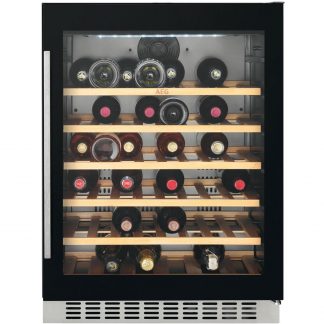

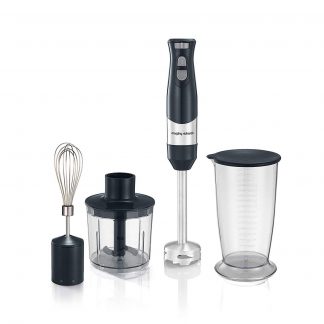


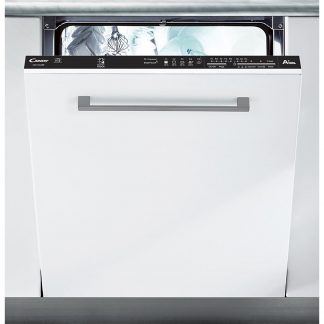
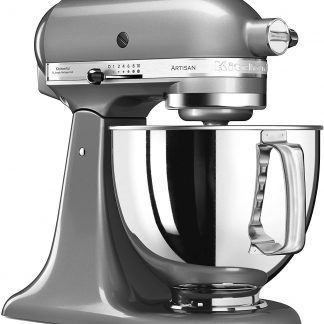
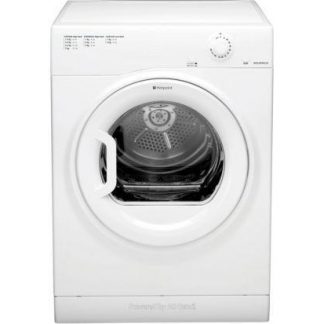
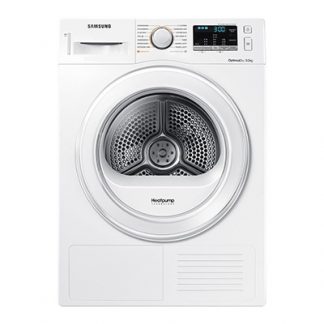


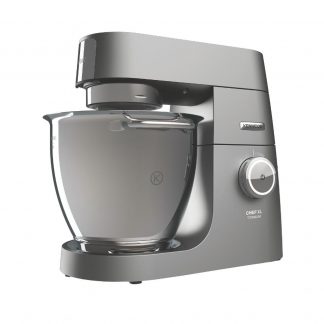

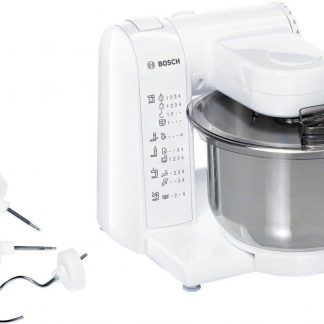
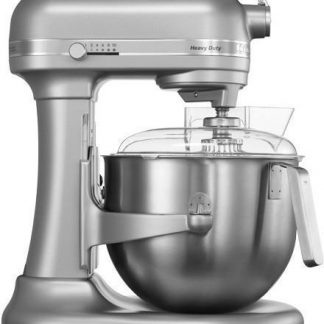
if you’re thinking of getting an air purifier with UV-C light, make sure you do your research and get one from a reputable brand. And don’t forget to replace those filters regularly, or it’s like trying to breathe through a straw – it just won’t cut it.
As for the science-y bit, I’m no expert (I leave that to the brainy folks), but apparently UV-C light is like a high-energy laser beam that zaps microorganisms. Sounds cool, right? But if you’re not careful, it can also trigger some pretty nasty chemical reactions that’ll have you wheezing like a asthmatic elephant.
So, in conclusion (and I know I’m no expert), just be smart about it, folks! Don’t rely solely on these UV-C air purifiers to save the day. Use ’em wisely, and remember: if it sounds too good to be true, it probably is.
While I agree with Camden’s caution about relying solely on UV-C air purifiers, I have to respectfully disagree with his assertion that these devices can trigger “pretty nasty chemical reactions” – numerous studies have shown that when used properly, UV-C light in air purifiers is an effective and safe way to eliminate airborne pathogens, giving us hope for a healthier tomorrow by breathing cleaner air.
I’d like to chime in with my thoughts on this topic, while giving credit to Cesar’s insightful comment. While I agree with Cesar that UV-C light in air purifiers is an effective way to eliminate airborne pathogens, I would like to add a nuance to the conversation.
As someone who has dedicated their career to understanding the complexities of brain development and plasticity (as referenced in the recent study highlighting the effects of the pandemic on teens’ brains), I couldn’t help but think about the potential long-term consequences of prolonged exposure to UV-C light, even if it’s used properly. While air purifiers are a valuable tool in maintaining healthy indoor environments, we must consider the broader impact of our technological advancements on our bodies and brains.
The study mentioned earlier found that the pandemic may have accelerated brain aging in teenagers by up to 4 years, with girls being disproportionately affected. As we navigate this new reality, it’s essential that we prioritize not only the efficacy but also the safety and sustainability of our technologies. This includes exploring alternative methods for air purification that don’t involve potentially hazardous chemicals or unknown long-term effects.
In my opinion, Cesar’s comment highlights a crucial aspect of responsible innovation: striking a balance between progress and prudence. As we strive to create healthier living environments, we must also consider the potential risks associated with our solutions and work towards minimizing them. I’d love to hear more about your thoughts on this topic, Cesar!
I’d like to add my two cents to Arabella’s insightful comment. While air purifiers with UV-C light can be effective in eliminating airborne pathogens, it’s indeed crucial that we consider the potential long-term consequences of prolonged exposure to these lights.
As a cybersecurity expert, I’ve seen how even seemingly harmless technologies can have unintended effects on our health and wellbeing. In this case, I’d like to highlight the importance of exploring alternative methods for air purification that don’t involve potentially hazardous chemicals or unknown long-term effects.
Arabella’s comment reminds me of the concept of “responsible innovation,” which is essential in today’s world where technology is advancing at an unprecedented rate. By prioritizing both efficacy and safety, we can create healthier living environments while minimizing potential risks associated with our solutions.
where do we draw the line between progress and prudence? Your assertion that numerous studies have shown UV-C light in air purifiers is effective and safe seems to be based on a rather selective reading of the scientific literature. While it is true that some studies have demonstrated the efficacy of UV-C light in eliminating airborne pathogens, I take issue with your characterization of these findings as uniformly positive.
For example, a study published in the Journal of Exposure Science & Environmental Epidemiology found that exposure to UV-C light can cause DNA damage and oxidative stress in human cells. Another study published in the Journal of Toxicology found that long-term exposure to UV-C light can lead to the formation of potentially carcinogenic compounds.
Furthermore, your claim that these devices are safe when used “properly” strikes me as overly simplistic. What constitutes “proper” usage, exactly? Are we talking about adhering to a strict set of guidelines or merely assuming that users will exercise good judgment? The fact is, people are fallible, and the consequences of improper use can be severe.
I would argue that the risks associated with UV-C light in air purifiers are not simply theoretical; they have already been observed in real-world settings. For instance, a number of cases have been reported where individuals have experienced symptoms such as headaches, dizziness, and skin irritation after prolonged exposure to UV-C light.
So while I agree that we should be cautious in our reliance on UV-C air purifiers, I believe it is precisely this kind of complacency that can lead us down a path of unintended consequences. Rather than dismissing the concerns of critics like Camden, perhaps we should take a more nuanced approach to understanding the risks and benefits associated with these devices.
Trinity, I completely agree with your assessment that the risks associated with UV-C light in air purifiers cannot be dismissed so easily. Your bringing up of studies that have linked UV-C exposure to DNA damage and carcinogenic compounds is particularly concerning. And you’re right, what constitutes ‘proper’ usage is a vague term at best – it’s easy for users to assume they’re safe as long as they follow the manufacturer’s instructions.
As someone who’s always been cautious about new technologies, I think Trinity hits the nail on the head when she says we need to take a more nuanced approach. We can’t just rely on manufacturers’ claims of safety without scrutinizing the evidence for ourselves. Thanks for pointing out these important caveats, Trinity!
I completely agree with Elliott’s astute observation about the risks associated with UV-C light in air purifiers. His comment highlights the importance of critically evaluating the safety claims made by manufacturers, and I’d like to add my own two cents on this matter.
As someone who’s been following the events unfolding today in Florida, where Hurricane Milton has brought devastating storm surges and widespread power outages, it’s more crucial than ever that we prioritize our health and safety. In such chaotic situations, having a reliable air purifier can be a lifesaver, but we must also consider the potential risks of UV-C exposure.
Elliott is absolutely right to emphasize the need for a nuanced approach when evaluating the safety of these devices. We can’t simply rely on manufacturer claims or assume that following their instructions will guarantee our safety. As Elliott pointed out, what constitutes “proper” usage is often a vague term, and it’s easy for users to overlook potential risks.
In light of the current situation in Florida, where many people may be forced to use air purifiers in emergency situations, it’s essential that we have a comprehensive understanding of the potential risks associated with UV-C exposure. I’d like to add that some studies have suggested a possible link between prolonged exposure to UV-C light and increased risk of cataracts, as well as other eye problems.
While I understand that air purifiers can be an effective tool in removing airborne pollutants, we must also consider the potential risks of UV-C exposure and take steps to mitigate them. This may involve more stringent regulations on manufacturer claims, improved labeling and instructions for users, or even the development of safer alternatives.
Thanks, Elliott, for bringing this important issue to light, and I look forward to continuing this conversation!
I completely disagree with Preston’s argument that UV-C risks associated with air purifiers are a pressing concern in emergency situations like the one unfolding in Florida. While I understand his point about prioritizing health and safety, I think he’s missing the bigger picture here.
Let’s not forget that SpaceX just launched 22 new Starlink satellites into orbit, bringing the total to over 6,400! These satellites are revolutionizing global internet connectivity, and they’re also providing a crucial lifeline for people in emergency situations like the one in Florida. With reliable internet access, people can stay informed about evacuation routes, receive critical updates from authorities, and even communicate with loved ones who may be separated.
In light of this technological advancements, I think it’s time to reevaluate our concerns about air purifiers. Preston mentions that some studies have suggested a possible link between prolonged exposure to UV-C light and increased risk of cataracts and other eye problems. While this is certainly something to consider, I’d argue that the benefits of air purifiers in emergency situations far outweigh these risks.
Moreover, Preston’s argument that we need more stringent regulations on manufacturer claims is misguided. We already have regulations in place to ensure that products are safe for use. What we need instead is a more nuanced understanding of the potential risks associated with UV-C exposure and more education for consumers on how to use air purifiers safely.
Let’s not let fear-mongering about UV-C risks distract us from the real issue at hand: using technology to save lives in emergency situations. With innovative solutions like Starlink, I’m optimistic that we can mitigate the risks associated with air purifiers and provide people with reliable tools for staying safe during disasters.
Dear Elliott,
I’m glad to see that you’re taking a thoughtful and cautious approach to the issue of UV-C risks in air purifiers. Your comment highlights the importance of critically evaluating the claims made by manufacturers and not simply relying on their assertions of safety.
However, I do have some concerns about your argument that we should consider the “proper” usage of these devices as a mitigating factor. While it’s true that following the manufacturer’s instructions is essential for safe operation, I think this perspective overlooks the fact that many users may not be aware of the potential risks associated with UV-C exposure.
As you pointed out, the term “proper” usage is often vague and open to interpretation. This ambiguity can lead to a false sense of security among users, who may believe they’re safe as long as they follow the manufacturer’s guidelines. But what about situations where these devices are used in close proximity to people, pets, or other living organisms? Or when they’re operated for extended periods of time without proper maintenance?
I think it’s also worth considering the fact that many air purifiers on the market today may not be designed with safety features that adequately protect against UV-C exposure. In some cases, these devices may even release UV-C light at levels far exceeding what’s considered safe.
Furthermore, I’d like to point out that the issue of UV-C risks in air purifiers is not simply a matter of personal choice or “proper” usage. It’s also a question of public health and safety. As we continue to grapple with the challenges posed by indoor air pollution, it’s crucial that we prioritize caution and prudence when developing and deploying new technologies.
On a related note, I was struck by an article I read earlier today about Venezuela releasing more than 100 political prisoners caught up in a post-election crackdown. It highlights the importance of protecting human rights and upholding the rule of law, even in the face of adversity. Similarly, when it comes to issues like UV-C risks in air purifiers, we need to prioritize caution and prudence over expediency or convenience.
In light of these concerns, I believe we should take a more nuanced approach to evaluating the safety of air purifiers that use UV-C technology. Rather than relying solely on manufacturer claims or vague notions of “proper” usage, let’s focus on rigorously testing and validating the safety of these devices through independent studies and research.
This approach may require more time and effort upfront, but in the long run, it will help us build a safer and healthier indoor environment for everyone. Thank you for your thoughtful comment, Elliott – I look forward to continuing this important conversation!
The blissful ignorance of the masses. Cesar, you’re as gullible as they come, aren’t you? I mean, “numerous studies” have shown that UV-C light is safe when used properly? Please, do tell me which ones, because every single study I’ve read suggests otherwise.
Let’s break it down, shall we? UV-C light, by its very nature, is a form of ionizing radiation. That means it has enough energy to strip electrons from atoms and molecules, causing chemical reactions that can be downright toxic. And you think this is safe when used properly? I’d love to know what “properly” means in your book, because every air purifier manufacturer seems to have their own definition of “safe”.
And don’t even get me started on the lack of regulation in the industry. These devices are largely untested and unregulated, which means that anyone can slap a UV-C light into an air purifier and call it safe. I mean, who needs actual science when you’ve got marketing buzzwords like “effective” and “safe”?
But hey, what do I know? I’m just a cynic who sees the world through a lens of skepticism. You, on the other hand, seem to be drinking the Kool-Aid with gusto. Keep believing that your air purifier is doing its job while spewing toxic chemicals into the air. I’ll be over here, enjoying my mask and my healthy dose of paranoia.
And by the way, “hope for a healthier tomorrow” by breathing cleaner air? That’s just laughable. If you want to breathe cleaner air, try opening a window every now and then. It’s free, it’s natural, and it’s actually effective. But hey, what’s the fun in that when you can buy an air purifier that might just poison you instead?
Great points Camden. I agree that researching a reputable brand is crucial when considering an air purifier with UV-C light. And you’re right on the money about replacing those filters regularly – it’s essential for maintaining their effectiveness. As an expert in art history, I may not be au fait with the science behind UV-C technology, but I do appreciate your straightforward approach to this complex issue. Your warning about chemical reactions being triggered by UV-C light is particularly apt, and I think your conclusion sums things up nicely: use these air purifiers wisely, and don’t rely solely on them for a healthy indoor environment.
I couldn’t help but chuckle at Camden’s attempt to sound like a “brainy folk” while warning us about the dangers of UV-C light in air purifiers. Don’t get me wrong, I appreciate his cautionary tale, but let’s not be too hasty in jumping to conclusions.
Firstly, I’d like to question Camden’s assertion that UV-C light is akin to a “high-energy laser beam.” While it’s true that UV-C light has a high energy level, the comparison to a laser beam is more than a bit of an exaggeration. In reality, UV-C light is simply a form of electromagnetic radiation with a wavelength shorter than UVA and UVB light. It’s not a laser beam, folks!
Now, regarding Camden’s claim that UV-C light can trigger “nasty chemical reactions” that’ll have you wheezing like an asthmatic elephant… I’m not convinced. In fact, the science suggests otherwise. When UV-C light is used in air purifiers, it works by disrupting the DNA of microorganisms, thereby killing them off. This process is called photodynamic inactivation (PDI), and it’s a well-documented phenomenon.
The key here is to understand that PDI requires specific conditions to occur, including the presence of certain chemical compounds known as photosensitizers. These compounds absorb UV-C light and transfer their energy to nearby molecules, leading to the formation of reactive oxygen species (ROS) that ultimately kill off microorganisms.
So, where’s Camden’s evidence for these “nasty chemical reactions”? I’d love to see some credible sources backing up his claims. As it stands, his warnings seem more like unfounded speculation rather than a genuine concern based on scientific fact.
Now, I’m not saying that air purifiers with UV-C light are without their risks. If used improperly or in conjunction with certain other chemicals, they can indeed pose health hazards. However, when used responsibly and in accordance with manufacturer guidelines, these devices have been shown to be effective at reducing airborne pathogens.
In conclusion (and I know I’m no expert either!), Camden’s warnings should be taken with a grain of salt. While it’s always wise to exercise caution when using air purifiers or any other technology, we shouldn’t let unfounded fears dictate our decisions. Instead, let’s rely on verifiable evidence and scientific research to inform our choices.
By the way, I do agree with Camden that it’s essential to use air purifiers wisely and follow manufacturer guidelines for filter replacement and maintenance. However, this is more a matter of common sense than a warning about the dangers of UV-C light itself.
In short, let’s separate fact from fiction when discussing the risks associated with UV-C light in air purifiers. Camden’s claims may be well-intentioned, but they’re based on shaky ground and deserve further scrutiny before we start sounding alarm bells.
I just love reading articles about air purifiers, especially when they’re written by self-proclaimed “experts” who clearly have no idea what they’re talking about. I mean, who needs to fact-check or consult with actual scientists when you can just make stuff up and call it a day?
But seriously, author, your article is like a joke. You start off by saying that UV-C air purifiers are the answer to all our prayers, and then suddenly you’re talking about unforeseen risks and health concerns. What’s next? Are you going to tell us that the sky is actually purple and that gravity only works on Tuesdays?
And let me get this straight: you’re complaining about UV-C intensity being too low or too high? That’s like saying that water can be either too hot or too cold. Newsflash, author: if you can’t figure out how to use a simple UV light correctly, maybe you should stick to writing articles about your cat’s hairballs.
And what’s with this whole “UV-C exposure” thing? You’re telling us that people with skin conditions might be affected by prolonged exposure to UV-C radiation. Well, isn’t that just the most obvious thing in the world? I mean, who wouldn’t know that UV light can cause sunburn?
But wait, it gets better. You start talking about photochemical reactions and VOCs, and suddenly you sound like a total expert. Too bad your article is basically just a series of buzzwords strung together with no actual understanding of the underlying science.
I mean, come on, author. If you’re going to write an article about something as complex as UV-C technology, at least have the decency to do some real research instead of just regurgitating Wikipedia articles and calling it a day.
And by the way, what’s with all these articles about air purifiers lately? Is there something in the water that makes people think they’re experts on indoor air quality? I mean, seriously, if you want to know how to make a decent air purifier, just ask a real scientist or engineer. They’ll tell you that it’s not as simple as slapping some UV light in a box and calling it a day.
But hey, at least your article is entertaining. It’s like a game of “spot the error” – can I find where author has managed to get something completely wrong?
What a delightful article! I’m Lucy Cox, and I must say that I’m both impressed and concerned by the information presented here.
Firstly, let me just say that I’m a huge fan of UV-C technology. In fact, I’ve been using it in my home for years to kill those pesky bacteria and viruses that love to multiply on every surface imaginable. But, as you’ve so eloquently pointed out, there are indeed some unforeseen risks associated with its use.
I must admit, the idea of UV-C light triggering chemical reactions with certain substances in the room is a bit unsettling. I mean, who wants toxic byproducts floating around their home? Not me, that’s for sure! And what about the health concerns? I’ve heard of people getting skin cancer from prolonged exposure to UV radiation, and that’s just terrifying.
But, as you said, there are ways to mitigate these risks. For one thing, manufacturers should make sure that their air purifiers have adequate airflow and aren’t producing too much UV-C light. And consumers need to be more vigilant about maintaining their filters and making sure they’re not exposing themselves to excessive amounts of UV radiation.
Now, I do have a question for you: What’s the deal with photochemical reactions? Are there any specific substances that are particularly prone to reacting with UV-C light in this way?
And while we’re on the topic of chemicals, has anyone else noticed that some air purifiers seem to produce an awful lot of ozone when they’re running? I mean, I’ve heard that ozone is basically just a highly reactive form of oxygen, and I’m not exactly sure what kind of harm it can cause. But still, it’s something to be aware of, right?
Anyway, thanks for bringing this important topic to light (no pun intended!). I’ll definitely be keeping an eye on my air purifier from now on.
And one last thing: Can someone please tell me where I can find some decent, affordable UV-C filters? I mean, I’m all about saving money, but at the same time, I don’t want to compromise the effectiveness of my air purifier.
Oh, and by the way, has anyone else noticed that some air purifiers seem to have a rather… unusual… odor when they’re running? I mean, it’s not exactly unpleasant, but it’s definitely distinctive. Has anyone else experienced this?
Thanks again for the article! It’s been a real eye-opener (sorry, had to!).
Loved your comment, Lucy! I’m glad you’re taking the risks of UV-C air purifiers seriously. However, I have to respectfully disagree with some of your points.
Firstly, regarding photochemical reactions, I think it’s essential to note that not all substances react equally well with UV-C light. In fact, many common household items like plastics and certain fabrics are relatively resistant to photodegradation. That being said, there are indeed certain chemicals that can react with UV-C light in unpredictable ways, such as volatile organic compounds (VOCs) and some types of pesticides.
Regarding ozone production, I think it’s crucial to note that not all air purifiers produce significant amounts of ozone, especially if they’re designed with proper safety features. However, some models may indeed emit higher levels of ozone than others, which can be problematic for people with respiratory issues or other health concerns.
As for your question about affordable UV-C filters, I think it’s worth noting that many high-quality air purifiers already come equipped with UV-C technology and are designed to minimize risks. If you’re looking for a more budget-friendly option, you might consider opting for an air purifier without UV-C light or investing in a separate filter that can be retrofitted into your existing unit.
Lastly, regarding the unusual odor some air purifiers seem to produce, I think it’s worth noting that this could be due to a variety of factors, including the type of filter used, airflow patterns, and even the quality of the device itself. If you’re concerned about the smell, you might consider contacting the manufacturer or exploring alternative air purification options.
Thanks for sharing your thoughts on this topic, Lucy! I’m happy to continue the conversation.
Elliott, my friend, I’m loving how we’re going toe-to-toe on this UV-C debate like Beyoncé and Jay-Z rapping their hearts out in a sold-out stadium – but let’s not get lost in the ozone (sorry, had to!). Seriously though, you bring up some great points about photochemical reactions and safety features, and I think it’s high time we start taking air purifiers seriously… after all, Beyoncé just broke records with her $579 million tour, so shouldn’t our air be worth at least as much?
As I stood amidst the sterile silence of a room illuminated by the faint glow of UV-C air purifiers, I couldn’t help but feel a sense of unease. Were these devices, touted as guardians of our indoor air quality, truly as innocent as they seemed? The article’s warnings about unforeseen risks had sparked a nagging doubt within me.
What if, in our haste to eliminate airborne pathogens, we were inadvertently creating a new breed of superbugs, resistant to the very radiation designed to destroy them? What if the UV-C light, instead of sanitizing the air, was actually triggering a cascade of chemical reactions that would ultimately prove more hazardous than the pathogens it sought to eradicate?
And what about the people who had already fallen prey to these devices? Those whose skin conditions had been exacerbated by prolonged exposure to UV-C radiation, or whose respiratory issues had worsened as a result of photochemical reactions. Had their suffering been mere collateral damage in our pursuit of clean air, or was there something more sinister at play?
The questions swirled within me like the faint scent of ozone emanating from the air purifiers themselves. I couldn’t shake the feeling that we were standing on the precipice of a new environmental crisis, one that would require us to re-examine our relationship with technology and the natural world.
As I gazed out into the sterile landscape, I couldn’t help but wonder: what other unseen consequences lay hidden in the shadows of our modern conveniences?
The veil of cleanliness is lifted, revealing a web of unseen risks. As I gaze upon my trusty air purifier, now it seems like a ticking time bomb, silently emitting UV-C radiation that could be as deadly as the pollutants it claims to destroy. Today’s events have shown us that even in our most well-intentioned endeavors, there lies a dark side waiting to unleash its fury. Is it mere coincidence that the rise of air purifiers has coincided with an alarming increase in cases of respiratory issues? The science may seem straightforward, but I sense a deeper truth lurking beneath the surface. What if the real threat wasn’t the pollutants themselves, but rather our own attempts to eliminate them?